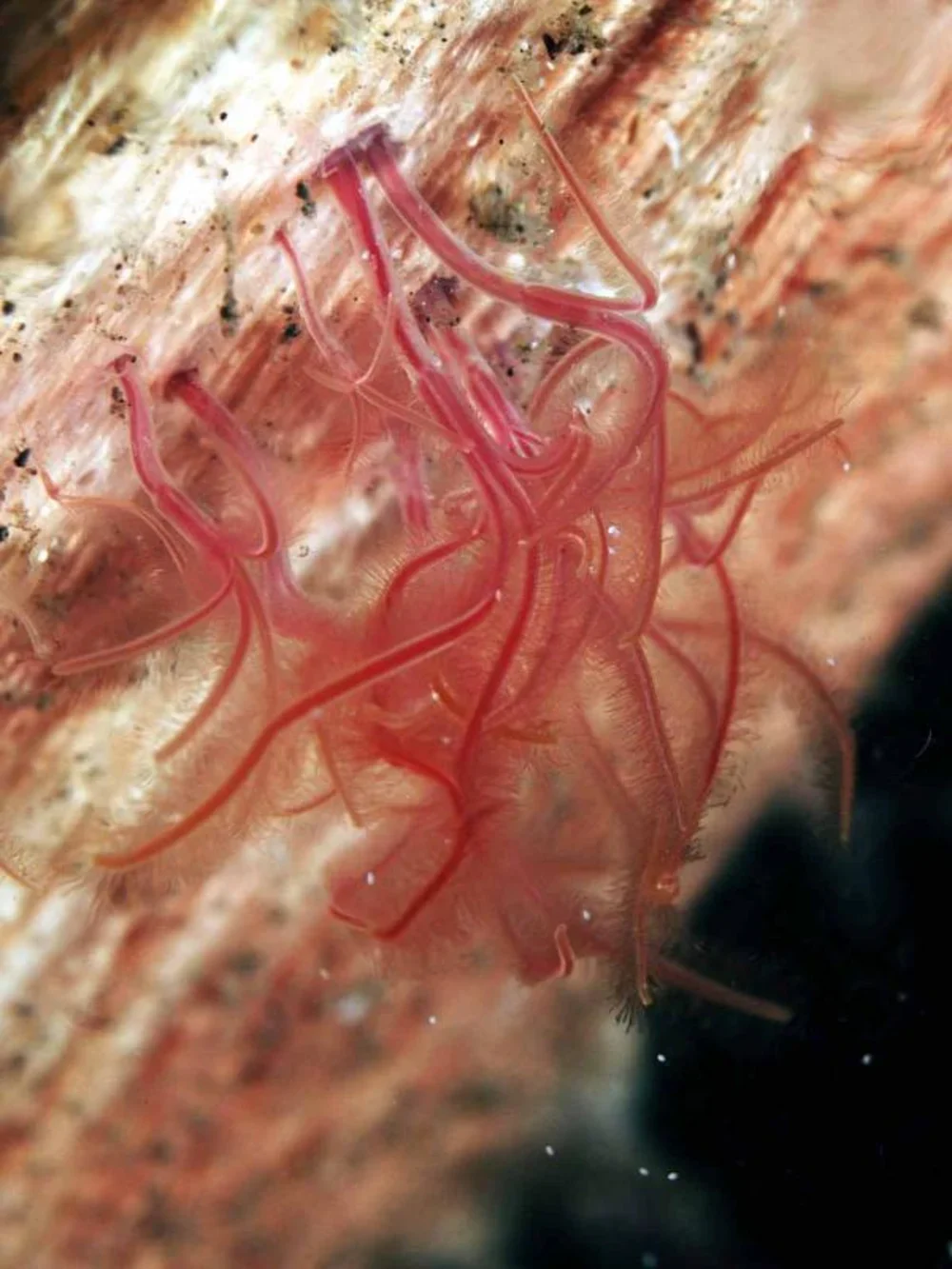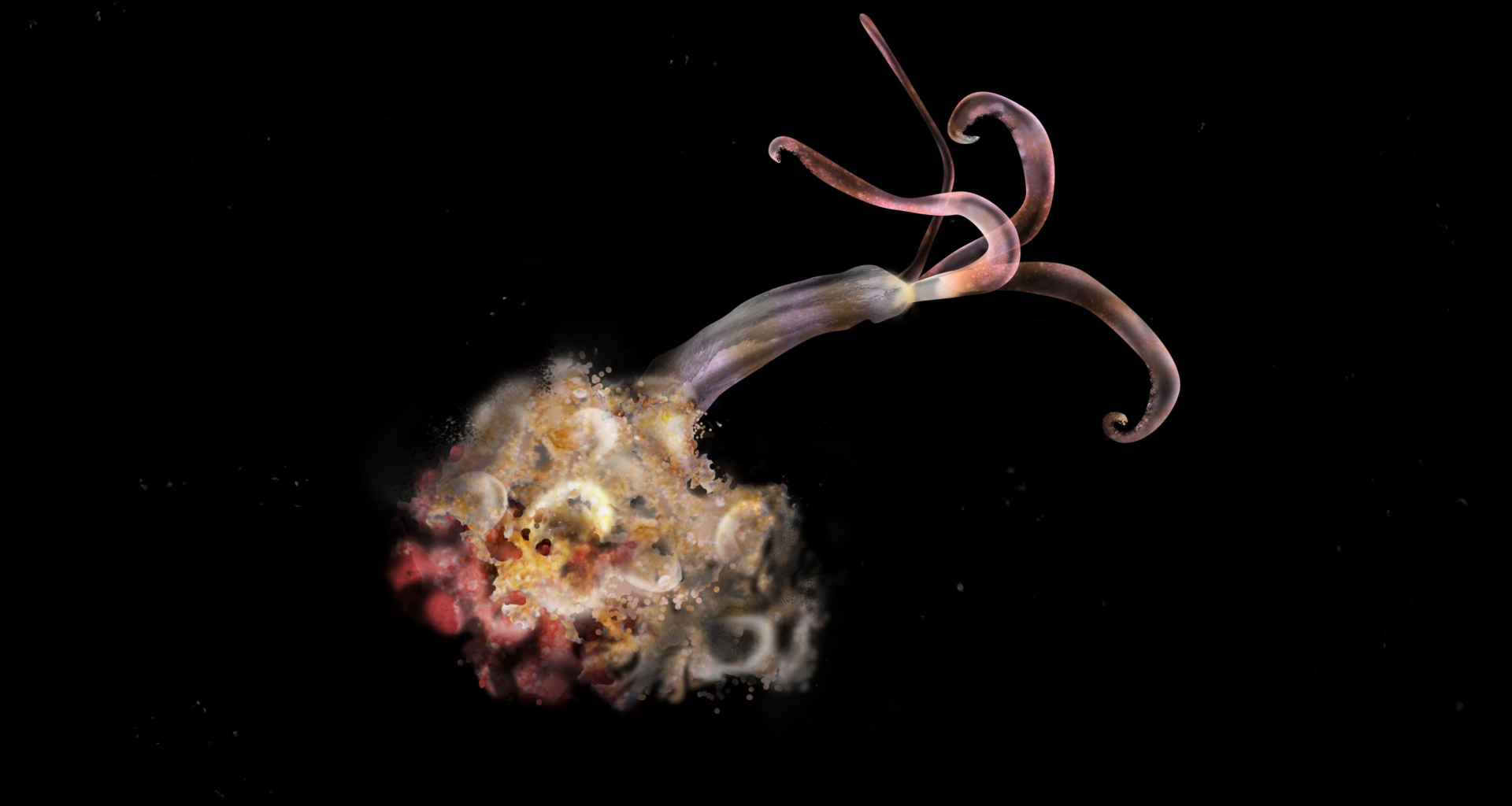De Leo, who co-led the study, explained that the missing zombie worms could be due to the low oxygen concentration at the observation site and that oxygen minimum zones (OMZs)—layers of water with a low oxygen concentration—are expanding due to climate change, which could be disrupting aquatic ecosystems and biodiversity.
DON’T MISS: This ant is defying nature, and science, as we know it
It is also noted in the study that the oxygen concentration at the site dropped from 0.3 ml/L to 0.22 ml/L during the experiment, a drop that could result in there being too little oxygen in the water for the zombie worms to survive.

The zombie worm, Osedax, on a bone. (Credit: Yoshihiro Fujiwara/JAMSTEC)
“It looks like the OMZ expansion, which is a consequence of ocean warming, will be bad news for these amazing whale-fall and wood-fall ecosystems along the northeast Pacific Margin,” commented Dr. Craig Smith, professor emeritus from the University of Hawaii, who co-led the experiment with De Leo.
The whale-fall ecosystems Smith described are essentially biodiversity hotspots created by whale carcasses that have sunk to the ocean floor, providing nutrients for all kinds of aquatic organisms, including zombie worms, who rely on the whale bones for nutrients and to reproduce.
De Leo says they are essentially islands for zombie worms and other species, as their larvae are dispersed in the ocean currents from one carcass to another.

